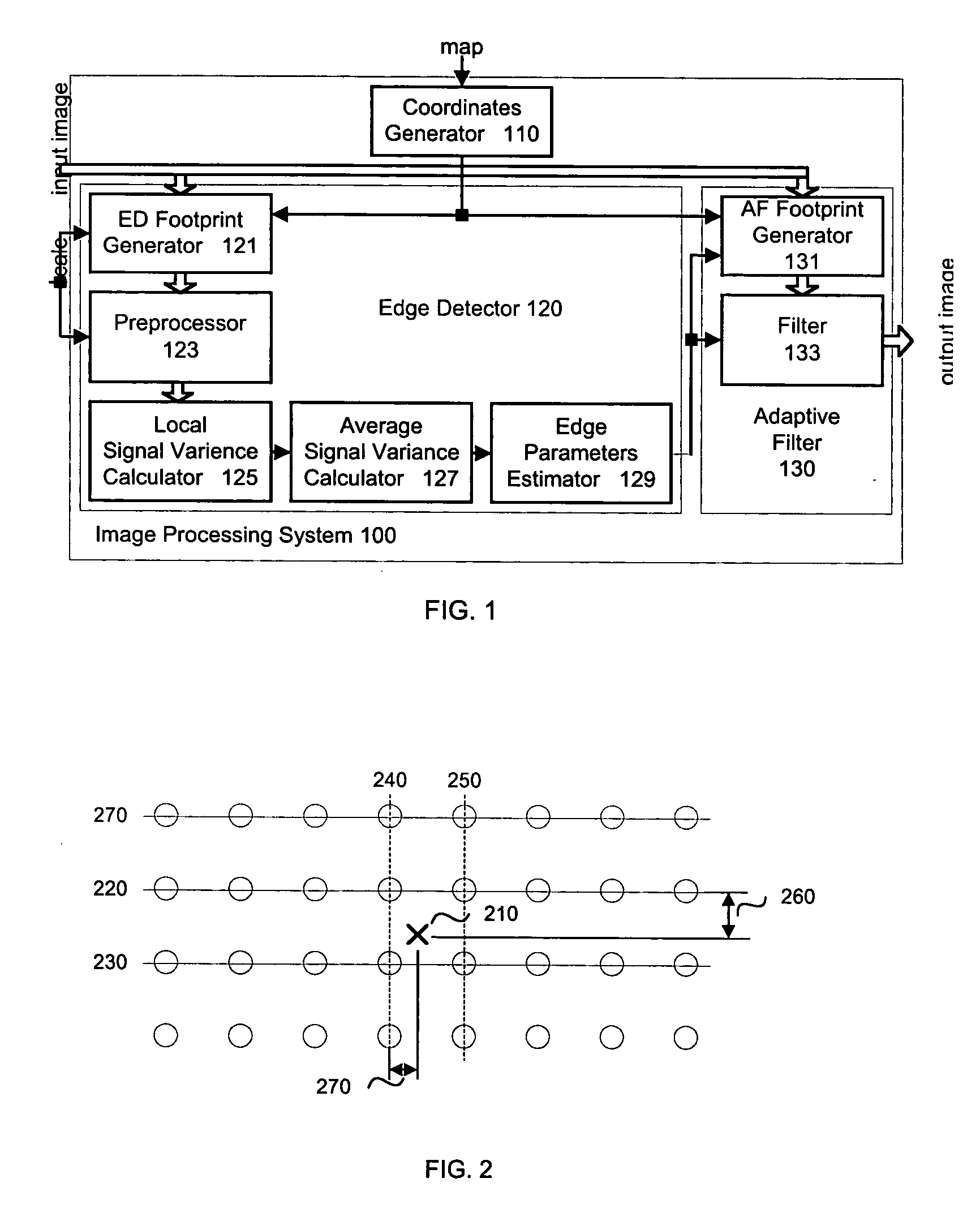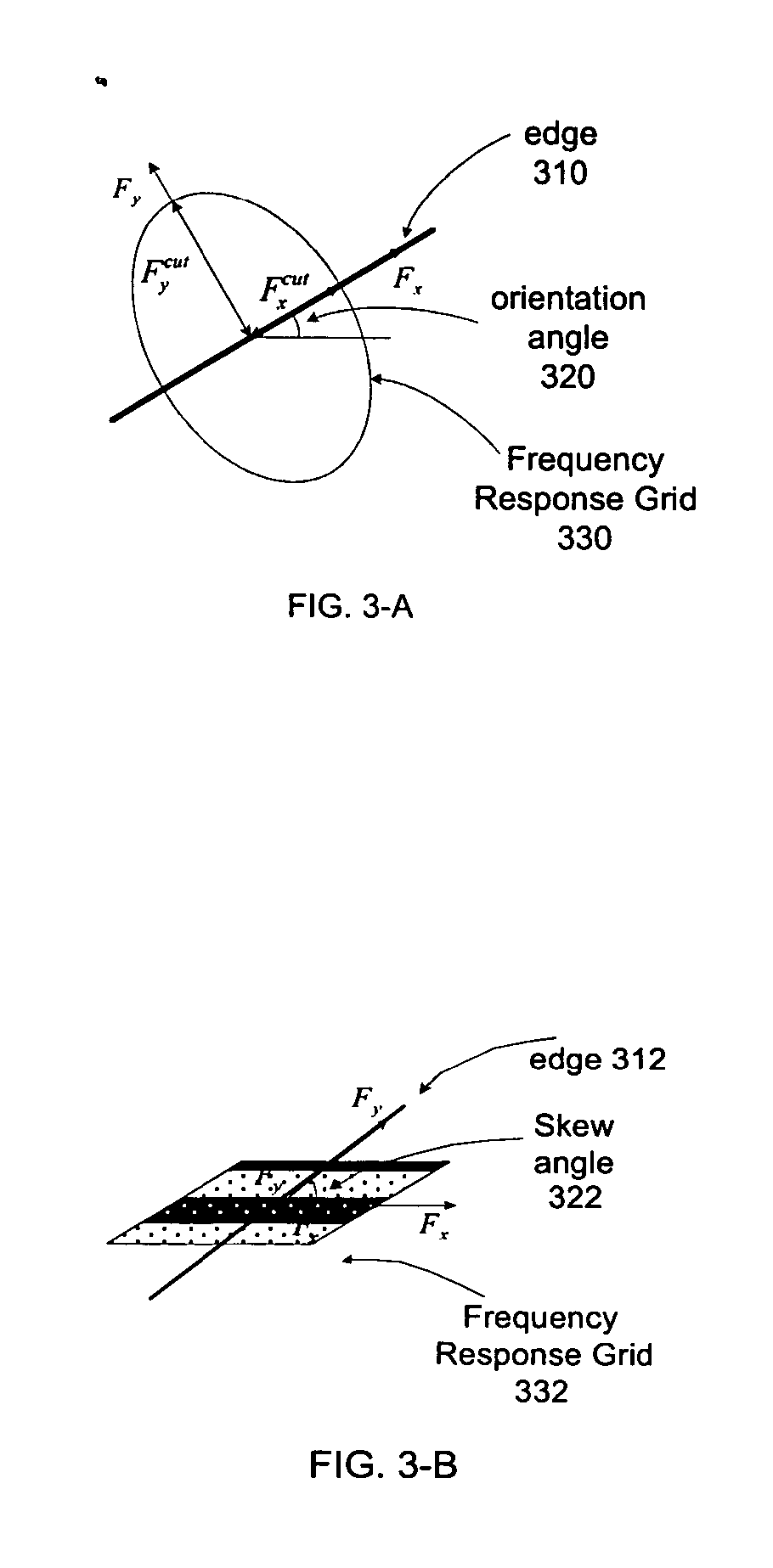Edge adaptive image expansion and enhancement system and method
a technology of expansion enhancement and edge adaptive filtering, applied in image enhancement, image analysis, instruments, etc., can solve the problems of generating noticeable artifacts in expanded images, substantially affecting the perceived quality of expanded edges, and other prior art systems that do not provide a high degree of adaptivity
- Summary
- Abstract
- Description
- Claims
- Application Information
AI Technical Summary
Benefits of technology
Problems solved by technology
Method used
Image
Examples
Embodiment Construction
[0046] Built in accordance with the present invention FIG. 1 represents an illustrated example of an image processing system 100, which uses edge adaptive filtering to achieve image expansion and enhancement. Image processing system 100 comprises coordinates generator 110, which transforms pixel coordinates from an output image space onto an input image space, edge detection (ED) footprint generator 121 for including input pixels in an edge detection computation, preprocessor 123 for prefiltering and downsampling of the input image, local signal variance calculator 125 for computing input pixel's signal variances, average signal variance calculator 127 for generating a representation of signal behavior in a vicinity of the processed output pixel, edge parameters estimator 129 for calculating edge parameters, adaptive filter (AF) footprint generator 131 for including input pixels in a final filtering, and filter 133 for calculating the output pixel.
[0047] In an example of the invent...
PUM
 Login to View More
Login to View More Abstract
Description
Claims
Application Information
 Login to View More
Login to View More - R&D
- Intellectual Property
- Life Sciences
- Materials
- Tech Scout
- Unparalleled Data Quality
- Higher Quality Content
- 60% Fewer Hallucinations
Browse by: Latest US Patents, China's latest patents, Technical Efficacy Thesaurus, Application Domain, Technology Topic, Popular Technical Reports.
© 2025 PatSnap. All rights reserved.Legal|Privacy policy|Modern Slavery Act Transparency Statement|Sitemap|About US| Contact US: help@patsnap.com



